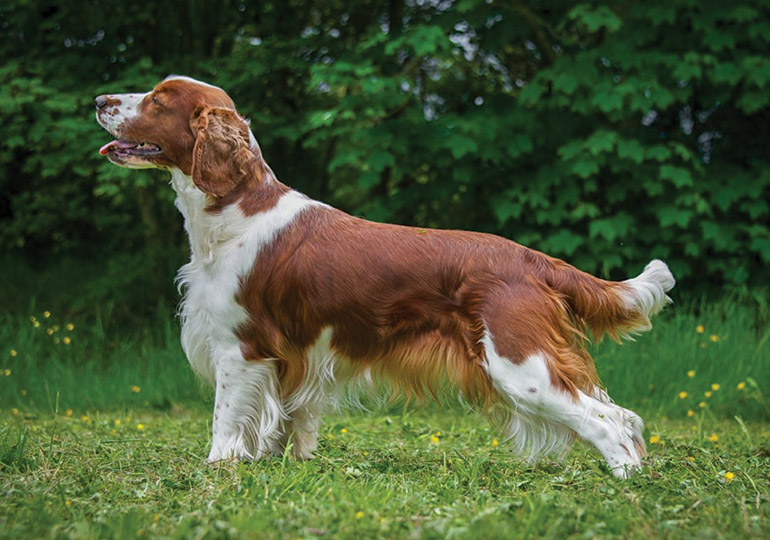
GROUP 3 - GUNDOGS
Welsh Springer Spaniels are considered among the oldest breeds in history, with mention of them dating back to 1570.
The first registered Welsh Springer Spaniel, named Corrin, was born in 1893, yet the breed wasn’t recognised by The Kennel Club (UK) until 1902. It is believed that Welsh Springers were first imported to Australia around the 1930s and 1940s, mainly for the purpose of working. The first Australian litter was registered in 1974.
The Welsh Springer Spaniel has an extremely keen nose and demonstrates enthusiasm and endurance, making it an ideal hunting companion. Its highly developed sense of smell also explains why this breed performs well in tracking. The breed has a merry disposition and is very active.
The Welsh Springer Spaniel’s enthusiasm and speed explains the breed’s success in Agility. However, its most endearing feature is the breed’s love of human companionship. While the Welsh Springer Spaniel craves the company of its human family, it can be wary of strangers. The breed is not timid or shy, but can take time to accept newcomers. It has a kind, gentle expression.
Welsh Springer Spaniels are easily recognised by their rich red and white markings. The breed has generous feathering on its chest and front legs as well as moderate feathering on the body. The breed’s ears are set low, hanging close to cheeks and are usually trimmed to demonstrate the vine shape of the ear.
The Welsh Springer Spaniel has a life expectancy of 12-14 years and, as with any breed, there are particular health issues, however, there are relatively few. The two main issues are Hip (and to a lesser degree, Elbow) Dysplasia and congenital eye problems including hereditary cataracts and Goniodysgenesis leading to Glaucoma. Other health issues may include Epilepsy and Thyroid disease but both of these are relatively rare in Australia.
The coat on the ears and top of the fore-chest should be trimmed with thinning scissors or electric clippers. The only other task is a tidy-up of the coat around the toes of each foot. Daily maintenance is a quick two to three minute comb/brush of the feathering. The coat of a Welsh Springer has a silky texture and if it gets wet and dirty through play and exercise, the dirt simply drops off as the coat dries.
It is not a ‘guard dog’ but the Welsh Springer Spaniel is an excellent ‘watch dog’ as virtually nothing escapes its keen senses. The breed is sweet-tempered and suitable for families, as it loves company.
Being an active breed, the Welsh Springer Spaniel is best suited to a home with at least an average-sized yard where it can play. The breed is particularly active and requires daily exercise.
Words: Dr Bruce Cornish
Image: dogthelove
Now you know a little about the Welsh Springer Spaniel, you may think that this is the dog for you. Before you make a decision, please make contact with the breed club or your State controlling body for purebred dogs. They will be able to give you information about available puppies and also suggest dog shows where you can see the breed and speak to breeders. In this way you will gain a better perspective of the Welsh Springer Spaniel and its needs, and whether this breed would suit your lifestyle.